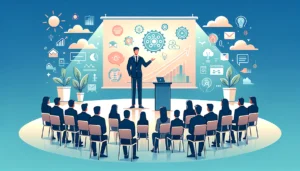Giving employees a truly global outlook
- 4 Min Read
Cielo Executive Vice President, Sally Hunter, explains how HR can prepare employees to be more globally engaged and work effectively in an international workforce – outlining the considerations and training that this hinges on.
- Author: Sally Hunter
- Date published: Mar 27, 2019
- Categories

In today’s market, employers are looking to trade internationally, form alliances with overseas partners and suppliers and/or open up new fronts in the war for talent by recruiting top-tier players worldwide. Taking any business global is a hugely significant, exceedingly complex and dynamic process that is fraught with difficulties and pitfalls that could disrupt established commercial activities.
 This makes it essential for companies with such ambitions to ensure that all staff are excited, inspired, and ready to adopt a more global outlook. While some will have anticipated the internationalist trend some time ago and already prepared for it, others require counselling, guidance and help along the journey. I have listed a number of effective routes to alter preconceptions and hone staff knowledge and capabilities.
This makes it essential for companies with such ambitions to ensure that all staff are excited, inspired, and ready to adopt a more global outlook. While some will have anticipated the internationalist trend some time ago and already prepared for it, others require counselling, guidance and help along the journey. I have listed a number of effective routes to alter preconceptions and hone staff knowledge and capabilities.
Ensure that the workforce is ready for international personnel
We have found, both with our clients and our own international workforce, that it is vital to include existing employees in the formal onboarding of all new people who are either in-house foreign nationals or who remain in their own country. In particular, welcoming, integrating and securing best performance from virtual team members in locations across multiple time zones and cultures – and engaging people already in place about these hires – requires careful communication and collaboration. Changes to an international operating arena should be explained clearly to domestic employees, stressing the benefits to them. These might include their own job security and boosted career prospects as a result of the company’s continued success. In addition, giving them a clear role in the mentoring and development of new colleagues creates immediate accountability and stakeholding involvement.
Bring employees together and celebrate differences
HR leaders can select from a wide choice of high-quality, self-service, online employee development packages. Ideally, these should be mandatory, with unconscious bias training particularly helpful in demystifying cultural differences and defining the best ways to communicate with international colleagues. Casual, fun socials are also a potent way to drive cohesion. For example, “lunch and learn” sessions showcasing foods of the world, with all employees given the opportunity to present their national foods to colleagues. Discussing ingredients, preparation and history will create conversation in an informally networked environment.
Prepare employees to be inclusive

Ideally, this is linked to their overall goals and objectives from a performance perspective and, if possible, to their personal bonus. It ensures that there is focus and commitment and the organisation demonstrates through leadership and financial compensation that the integration of international employees is high on its agenda.
Acclimatise foreign nationals to the company culture
To instil a consistent company culture, self-service, online training products should also be extended to arriving foreign nationals. This demonstrates that everyone has access to uniform guidance on cultural norms and can communicate effectively with colleagues from other backgrounds and in overseas locations.
It means that valuable new perspectives, techniques and business contacts can be more readily shared, understood and capitalised on by all staff – regardless of how long they have been with the organisation or where they are based – maximising benefits to the company.
Ideally, those based outside the home country will benefit from face-to-face meetings with colleagues early in their tenure to ensure strong working relationships. Subsequent regular visits, if possible, will reinforce these bonds and a spirit of cooperation and camaraderie.
Routine video conferencing also has very a positive impact on integration, while SM messaging and interaction will not only strengthen teams, but present perceptions of a close-knit team to clients and potential customers and other key audiences. These might include future high-calibre employees, investors and prospective purchasers of the company.
Ensure everyone can work together harmoniously
Multinational and cross-cultural teams are becoming more common as companies of all sizes continue to expand into increasingly accessible global marketplaces.
It means HR must get to grips with potential stumbling blocks that intercultural differences can bring. They should acknowledge this issue, making it their mission to anticipate and identify those that would be damaging and divisive while cultivating the ones that will bring strengths to the business.
While these will vary from organisation to organisation and sector to sector, an ongoing ‘nip-it-in-the-bud programme’ will stem potential misunderstanding and conflict, leading to a happier working environment, optimum staff retention and raised productivity.
In addition, HR leaders must make it clear that everyone is expected to be thoroughly respectful of diverse backgrounds and differing perspectives.
Invariably, it is very helpful to broadcast a message from the CEO across the business that states clearly why a diverse, harmonious workforce is so important for competitive advantage and continuing commercial viability.









